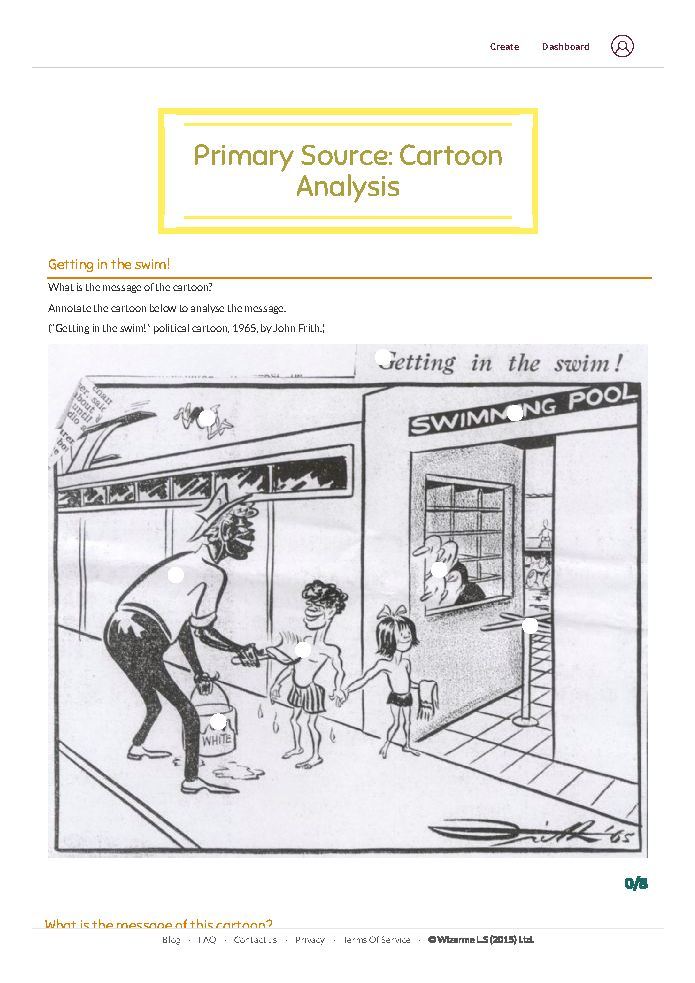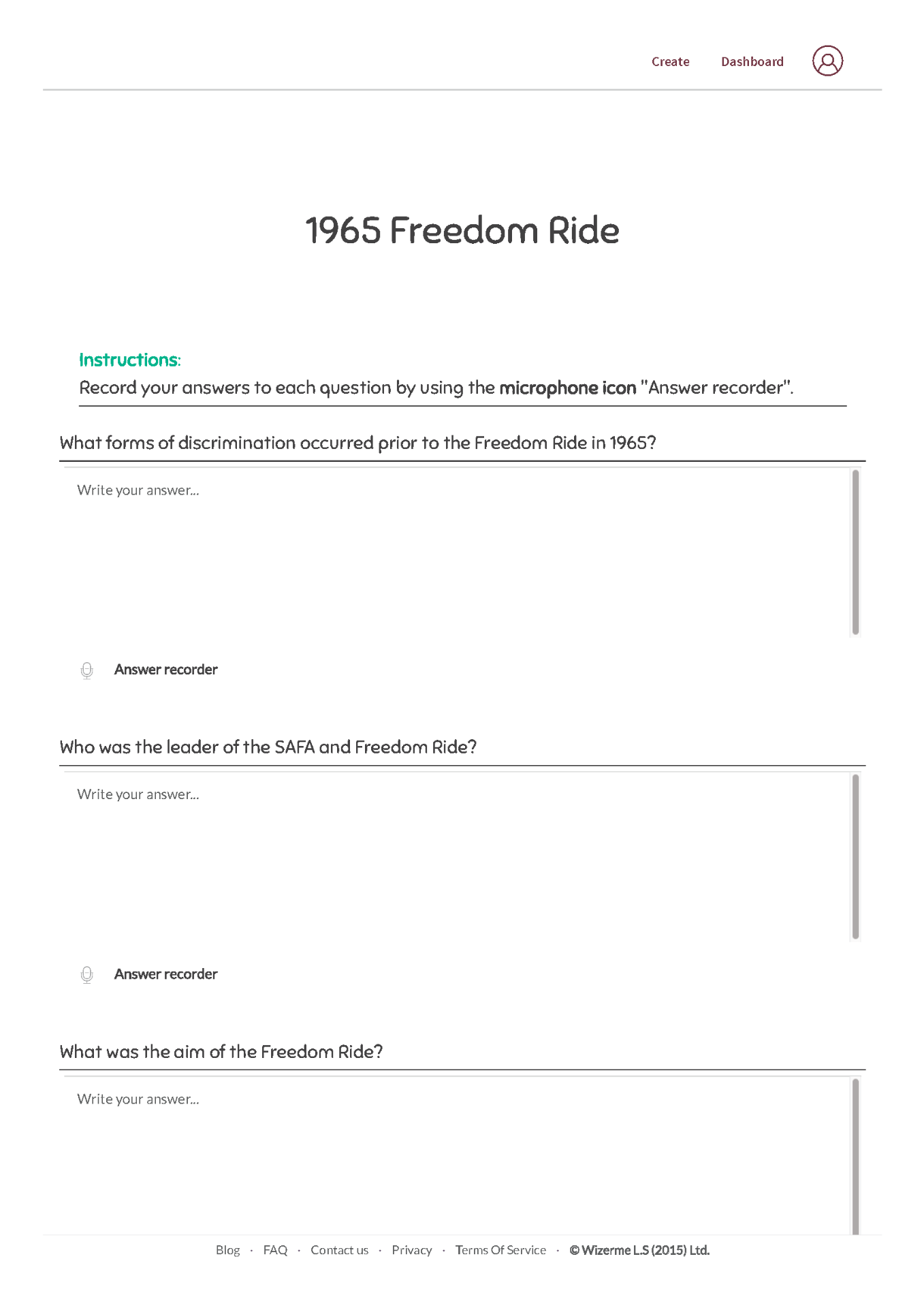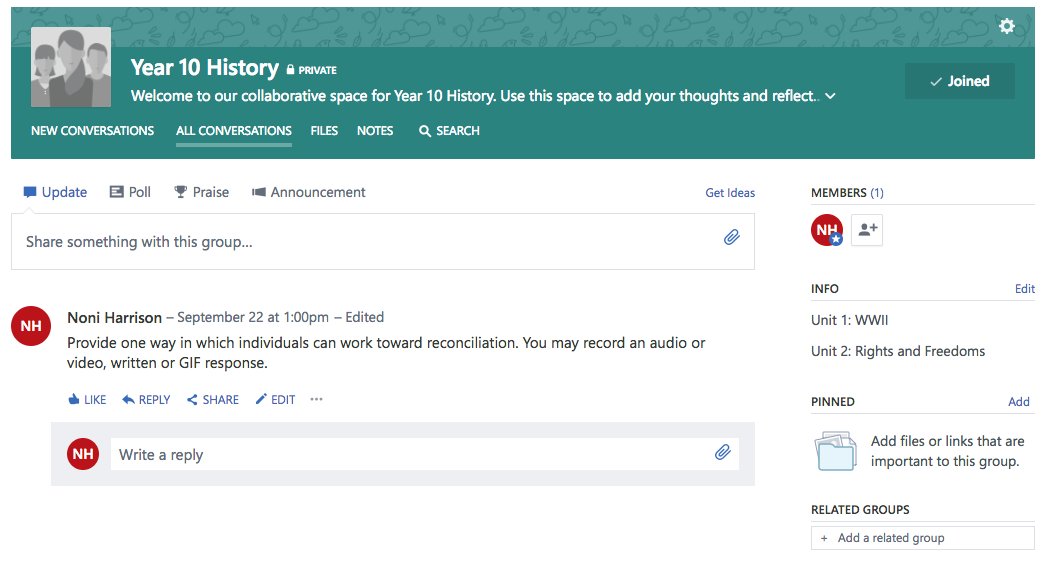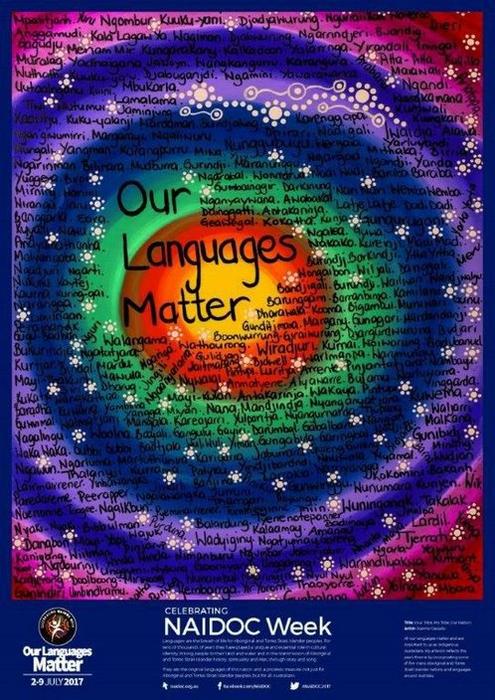Tag: Digital Storytelling
Digital Storytelling: The Long Road to Freedom
Digital Story: The Long Road to Freedom
Make sure to turn on your sound.

The long road to freedom by Noni Harrison is licensed under a Creative Commons Attribution-NonCommercial-NoDerivatives 4.0 International License.
NB: Students who will use this digital story have access to Microsoft Office 365; therefore, have free and easy access to Wizer and Yammer. CSU staff and students can access these platforms by using their CSU account for Microsoft Office 365. If you are unable to access these elements during your experience, please refer to the preview images below:



[Assignment 4: Digital Storytelling Project and Reflection Part B]
Protected: Assignment 4: Digital Storytelling Project and Reflection Part C
Exploring Digital Forms: Incorporating tools into practice
INF533 Assessment Item 3: Digital Storytelling Topic Proposal
Digital Storytelling Topic Proposal
- Proposal topic: The Aboriginal Freedom Rides
- Digital tools: Adobe Premier Pro and After Effects to create a video, then WireWax to transform the video into an interactive video.
- Rationale:
The interactive digital story will track the journey of the 1965 Freedom Rides in Australia. The Freedom Rides were led by Charles Perkins and the Student Action for Aborigines activist group from the University of Sydney (AIATSIS, 2014). This story will present and explore the major participants, their motivation, effects and the legacy.
This digital artefact will act as a model for Year 10 History students who are completing the Australian Curriculum unit Rights and Freedoms. The accompanying assessment task for this unit requires students to explore a significant individual or event related to the Aboriginal civil rights movement. Students are then required to create an interactive story in groups of three and share their creations via the class Yammer group via Microsoft Office 365. Students can create their story using any movie editing software they are comfortable with; for example, Windows Movie Maker, Apple’s iMovie or the Adobe suite. Students will then upload their video to WireWax and create interactive overlays to explore their topic in more detail.
This project aligns with the Australian Curriculum General Capabilities, which require students to engage with digital texts and develop their ICT capabilities (Queensland Curriculum & Assessment Authority, 2015). History provides students with unique opportunities to experience primary and secondary sources in printed and digital environments. By enhancing digital formats with interactivity, the historical inquiry experience can be heightened. This task will also meet the needs of the Information and Communication Technology Capability learning continuum. Specifically, the task will meet the following two sub-elements of Level 6; “select and use a range of ICT independently and collaboratively, analyse information to frame questions and plan search strategies or data generation” and “select and use a range of ICT tools efficiently and safely to share and exchange information, and to collaboratively and purposefully construct knowledge” (Australian Curriculum, Assessment and Reporting Authority, n.d.).
The interactive story will include the following elements:
- Written story
- Audio features
- Video footage
- Images
- Links to external sources of information and primary sources
- Map
- Embedded interactive quiz from Wizer
- Branching features may also be included.
References
AIATSIS. (2014). Commemorating the Freedom Ride. Retrieved from https://aiatsis.gov.au/exhibitions/1965-freedom-ride
Australian Curriculum, Assessment and Reporting Authority. (n.d.). Information and Communication Technology Capability learning continuum. Retrieved from https://www.australiancurriculum.edu.au/media/1074/general-capabilities-information-and-communication-ict-capability-learning-continuum.pdf
Queensland Curriculum & Assessment Authority. (2015). Year 10 History Australian Curriculum in Queensland. Retrieved from https://www.qcaa.qld.edu.au/downloads/p_10/ac_history_yr10.pdf
INF533 The Beginning
I’m incredibly excited to start this subject and am already buzzing about the potential to develop great resources and learn widely and deeply about digital literature. I’ve already come across a podcast from ABC, which outlines the significance of digital storytelling for Indigenous communities (2013). What a fantastic way of documenting verbal histories and cultural knowledge! Many individuals and groups work with Indigenous communities to record their languages and knowledge. Digital storytelling appears to be another way for young Aboriginal and Torres Strait Islander people to document their stories and preserve their culture. A fantastic organisation already doing this is Sharing Stories. Djungadjunga Yunpuingu, Sharing Stories cultural advisor, expresses that digital storytelling allows children to “make a bridge between themselves and other communities with technology” (2014). This concept is particularly relevant this year, as the theme for NAIDOC Week was Our Languages Matter.

This already has me thinking about (and planning for) the topic I would like to use for my digital story, as part of Assessment Item 4. My Year 10 History students will complete a Rights and Freedoms unit in Term 4, with a particular focus on Aboriginal and Torres Strait Islander rights and freedoms; therefore, I may create a digital story about Charles Perkins and the Australian Freedom Riders. I can use this to illustrate the key events, motives and also impacts of the Freedom Rides. This will have great links to the Australian Curriculum, Cross-Curriculum Priorities, and relevance to my school context.
It seems that digital story telling has the potential to promote literature (and curriculum concepts) in a highly engaging and interactive way.
References:
Australian Broadcasting Commission. (2013). Indigenous students in remote community experiment with digital storytelling. PM: News and currents affairs radio. Retrieved from http://www.abc.net.au/pm/content/2013/s3756653.htm
Cassidy, J. (2017). Your tribe, my tribe, our nation [Poster]. Retrieved from http://www.sbs.com.au/yourlanguage/aboriginal/en/content/dream-come-true-wiradjuri-artist-joanne-cassidy
Yunpuingu, D. (2014). Our stories. Retrieved from http://sharingstories.org/our-stories/